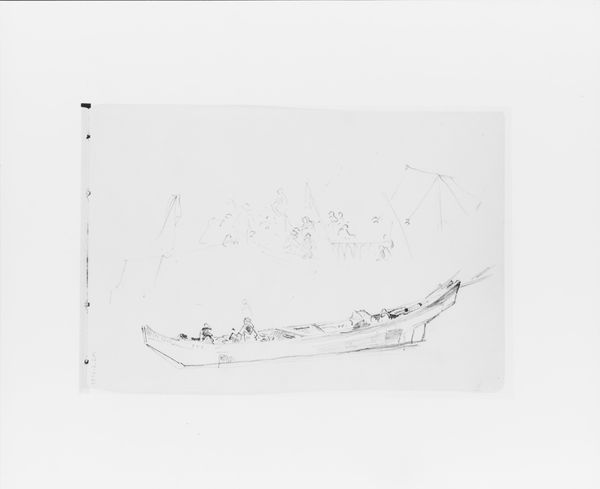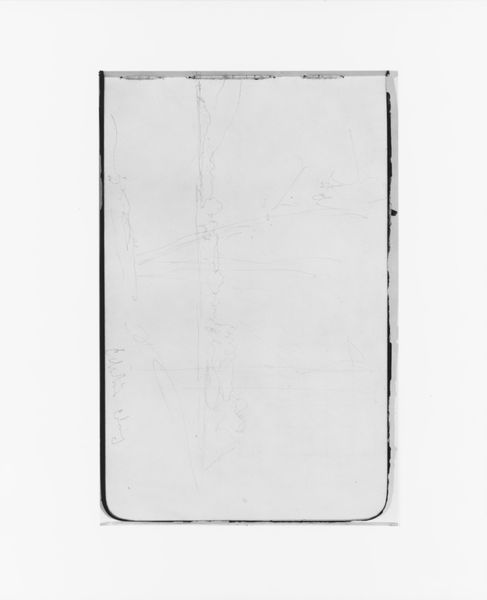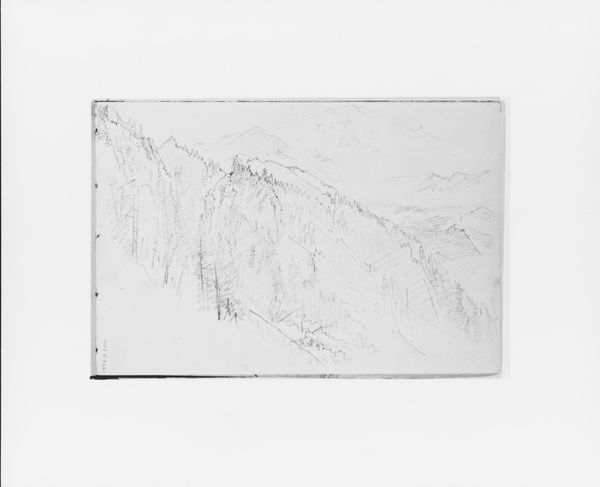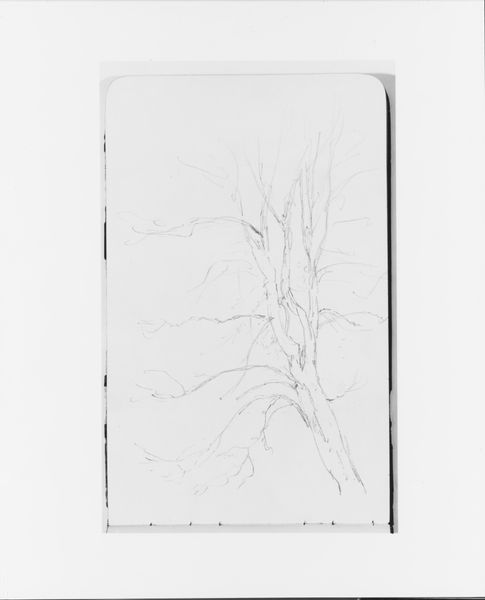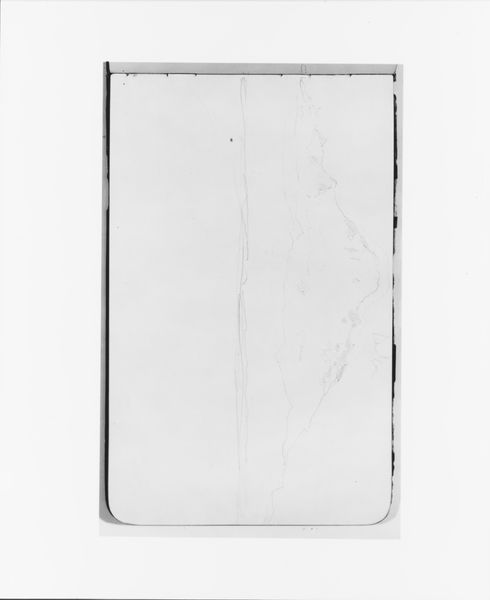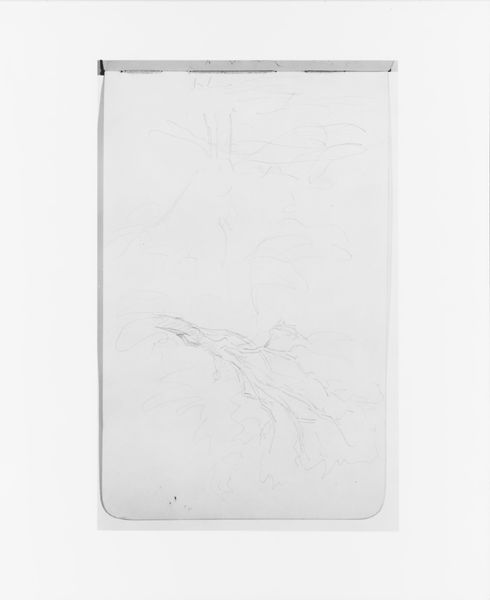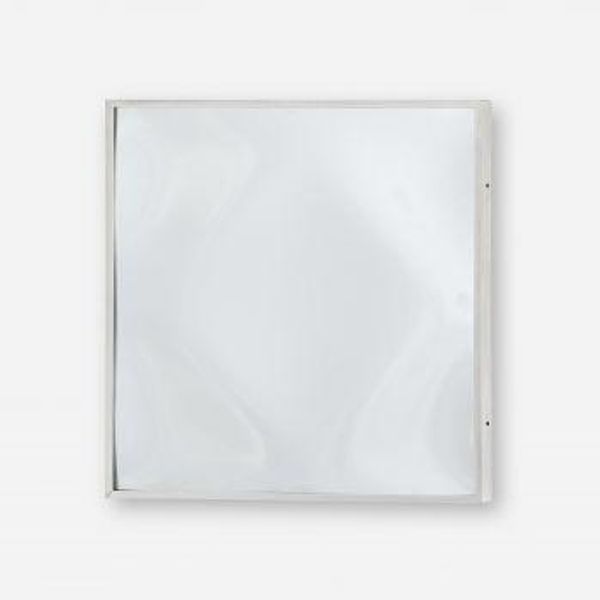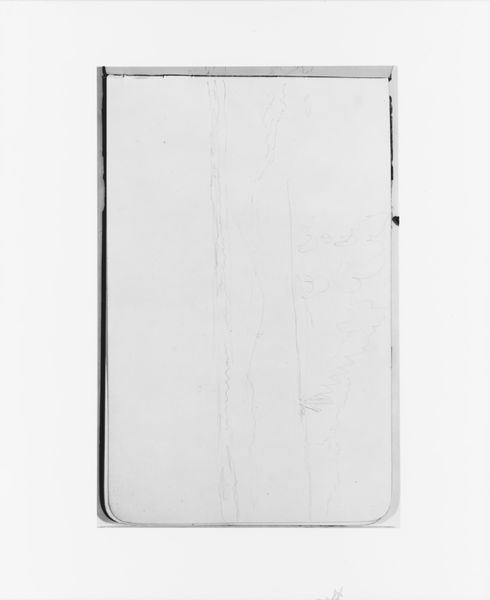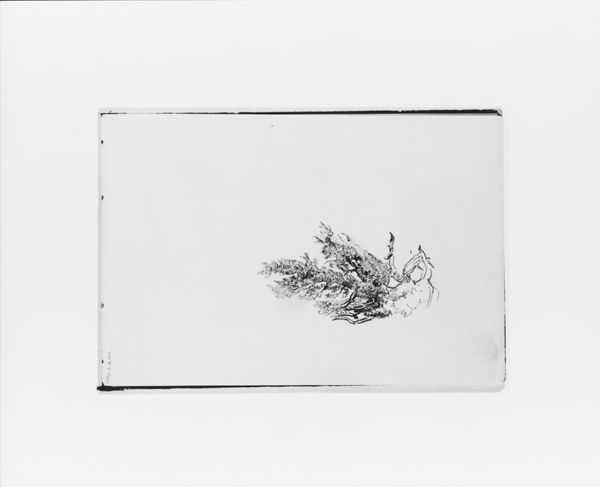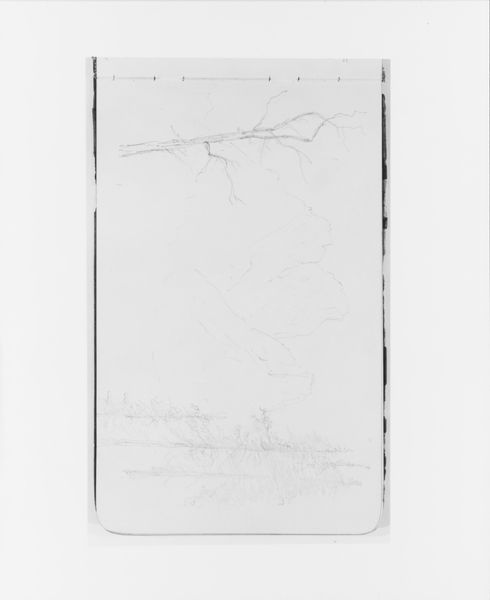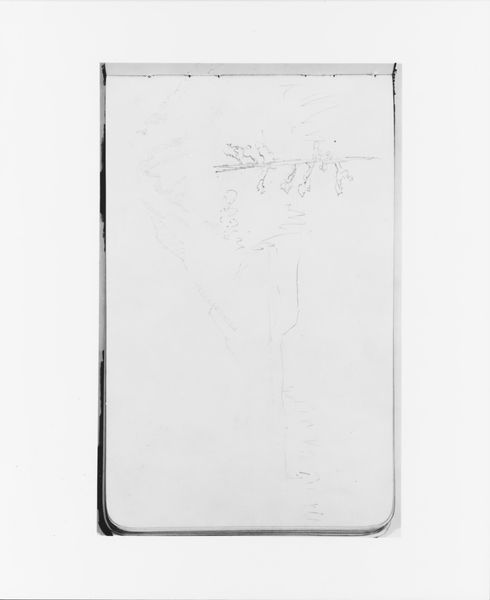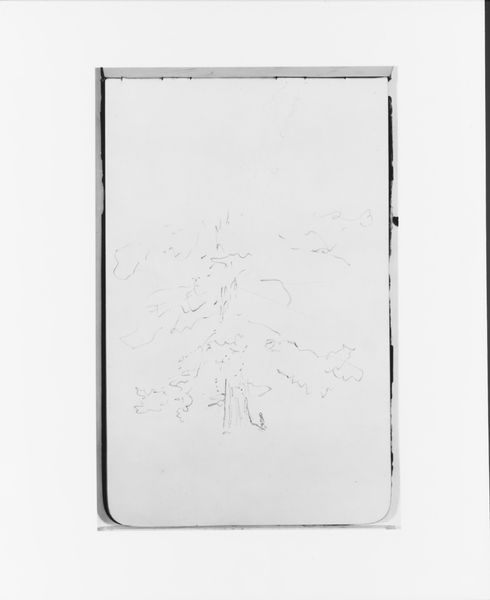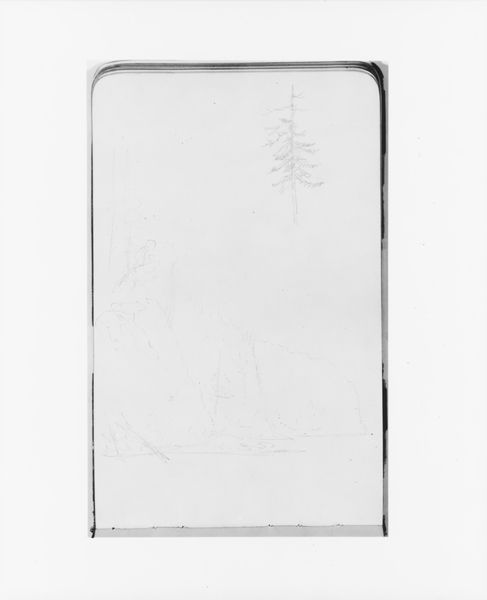
Dimensions: 5 x 7 1/2 in. (12.7 x 19.1 cm)
Copyright: Public Domain
This mountainside sketch was made by William Trost Richards, likely in the late 19th century, with graphite on paper. It’s a simple study, yet it demonstrates the foundational role of drawing in the artist’s practice. Richards was known for his landscapes, and he often used sketchbooks like this to capture details of the natural world, as studies for larger paintings. The graphite marks are delicate, almost tentative, revealing the artist's meticulous observation and recording of the mountain's form. The texture of the paper itself contributes to the overall effect, with the tooth of the surface catching the graphite to create subtle variations in tone. There is a directness and immediacy to this sketch, providing insight into the artist's working method. It represents the translation of three-dimensional forms into two dimensions through the hand, eye, and material of the artist. It challenges the traditional hierarchy between sketch and finished work, inviting us to appreciate the beauty and skill inherent in the act of drawing itself.
Comments
No comments
Be the first to comment and join the conversation on the ultimate creative platform.
